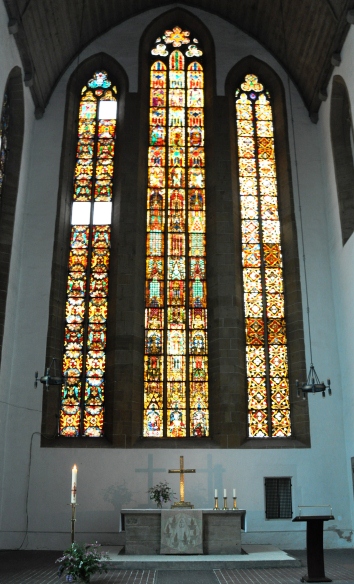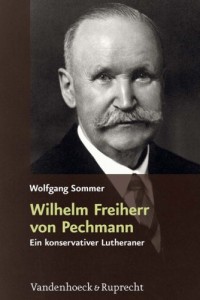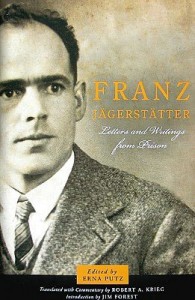ACCH Quarterly Vol. 17, No. 3, September 2011
Book Comment: Ecumenical, Academic, and Pastoral Work: 1931-1932. Volume 11 of the Dietrich Bonhoeffer Works English Edition (Minneapolis: Fortress Press, publication forthcoming in 2012).
By Victoria Barnett, United States Holocaust Memorial Museum
While the Bonhoeffer Works series is primarily a portrait of the biographical and theological path of Dietrich Bonhoeffer, in many places it also offers a uniquely detailed historical portrait of his church, political, and ecumenical context. This is particularly true of the forthcoming volume 11 of the series, which documents Bonhoeffer’s entry into the ecumenical world in the final years of the Weimar Republic. The volume offers some rare insights into the debates about nationalism and the emerging völkisch movements that were taking place in 1931 and 1932 within German Protestantism and in the European ecumenical movement. In many respects, this volume traces the beginnings of the fault lines that would soon place Protestants in Germany on opposing sides of the Kirchenkampf.
Like his ecumenical colleagues during the 1920s, Bonhoeffer was searching for the common ground that would unify “the church among churches.” But for Bonhoeffer, this common ground could exist only among churches that remained true to the confessions and the Word. This led him, at a very early stage, to criticize the notion of a national or any ideologically constrained church. As early as Sanctorum Commmunio (published in 1930), he warned that, “There is a moment when the church dare not continue to be a national church. . .”[1] This put him on an early collision course with German theologians such as Emanuel Hirsch, who in 1925 was already opposing German participation in the ecumenical movement. Hirsch’s position reflected the political isolationism of a German still angry about Versailles, but it was also based on the conviction that, as Robert Ericksen paraphrases it, “the ideal boundaries of a church should correspond to those of a Volk.”[2]
During the 1920s, then, opposing concepts of church were already evident in Germany, based in part upon contradictory views of the church’s role in a national culture. These issues began to dominate the ecumenical debates of the late 1920s and early 1930s, with both sides seizing ecumenism as a possible vehicle to further their cause. As Swiss ecumenical leader Adolf Keller noted in 1936, the interwar ecumenical movement found itself opposing a “rival, hostile, secular ecumenism” that sought not common religious ground, but rather the establishment of churches along the divisive boundaries of race and nationalism.[3]
In Germany, the Deutsche Christen were not alone in arguing for church recognition of those boundaries; even more mainstream Protestant leaders (including some who would join the Confessing Church) welcomed a new national destiny for Germany and saw this as part of some divine plan. The particular danger for the church came from within: from theologians and pastors who believed that religion and the new ideologies could be merged, as Gerhard Kittel contended when he supported Nazism as “a völkisch renewal movement on a Christian, moral foundation.”[4]
Thus, even before 1933, the lines of demarcation and the cast of characters who would soon play leading roles in the German church struggle had been established.[5] And this is where DBWE 11 begins: in the summer of 1931, after Bonhoeffer’s return from his year at Union Theological Seminary in New York. Before beginning his time as a lecturer in Berlin, Bonhoeffer traveled to Bonn where he met Karl Barth for the first time, attended the World Alliance conference in Cambridge and was appointed one of the three ecumenical “youth secretaries.” In the year that followed he attended ecumenical gatherings in Czechoslovakia, Geneva, and Gland, Switzerland, and he became an active participant in German ecumenical discussions.
One of the striking things about these ecumenical gatherings is the number of Germans in attendance who subsequently became prominent Deutsche Christen or openly embraced a nationalistic theology: in addition to Paul Althaus and Emanuel Hirsch, Hermann Sasse, Reinhold Krause (who delivered the infamous Sportpalast speech in November 1933), Friedrich Peter, Adolf Schlatter, Georg Wobbermin, Theodor Heckel, Hans Schoenfeld, August Schreiber, Fritz Söhlman, Wilhelm Stählin, and Erich Stange all make appearances in DBWE 11. In particular, the minutes and documents from the ecumenical meetings in this volume offer a detailed picture of the debates among the Germans. At the April, 1932, Berlin conference of the German Mittelstelle for ecumenical youth work in Berlin, Bonhoeffer disagreed with practically everyone present, including Theodor Heckel, who as bishop in charge of the church’s foreign office subsequently tried to block foreign recognition of the Confessing Church (and who after Bonhoeffer’s return from London denounced him to authorities as an “enemy of the state”).
This is a meeting where Friedrich Peter (later the Deutsche Christen bishop of Magdeburg) spoke of the need for the “völkisch self- preservation” of the church, and Bonhoeffer openly criticized the racialized language that had found its way into German theology, most specifically the concept of a divine order of creation that stressed the “separation and differences of peoples, their characteristics and fate.” Here Bonhoeffer scholars can find the political context of Bonhoeffer’s opposition to the fixed order of creation (Schöpfungsordnung) being promoted by the nationalist theologians, and read his highly political articulation of the “order of preservation” (Erhaltungsordnung) that he promoted to counter the nationalists.
The volume also documents Bonhoeffer’s relationship to those at the opposite end of the spectrum, particularly the individuals who were working in the early 1930s with Friedrich Siegmund-Schultze in his social ministry in eastern Berlin: Franz Hildebrandt, Richard Jordan, Renate Lepsius, Gertrud Staewen, and Hermann Maas. The rich details of the ecumenical documents and correspondence in this volume give a clear portrayal of the theological and political fault lines within German Protestantism on the eve of Nazism, before the real madness began.
[1]. Bonhoeffer, The Communion of the Saints (New York: Harper and Row, 1963), 189.
[2]. Robert Ericksen, Theologians Under Hitler (New Haven: Yale University Press, 1985) p. 142.
[3]. Keller, Adolf. Church and State on the European Continent. (London: The Epworth Press, 1936), p. 361.
[4]. Ericksen, p. 35.
[5]. See Glenthoj, 131ff, and Marikje Smid, Deutscher Protestantismus und Judentum 1932/1933 (Munich: Kaiser Verlag, 1990).



